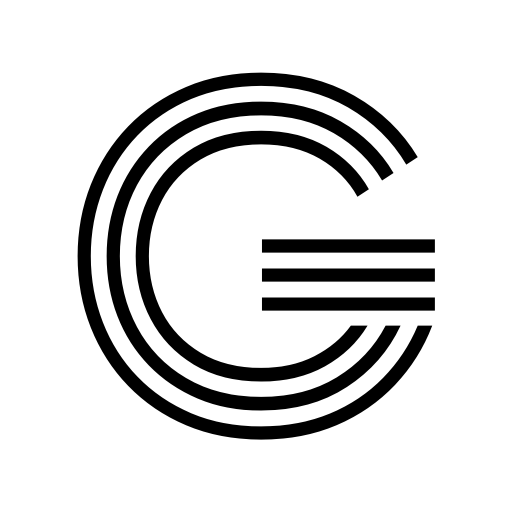5 Money Mistakes I Made in My 20s (and What I Learned)
Your twenties are supposed to be the best years of your life—a time for exploration, growth, and building the foundation for your future. But let’s be honest: they’re also a financial minefield. Between student loans, entry-level salaries, and the pressure to “live your best life,” it’s easy to make money mistakes that can haunt you for years to come.
Looking back at my twenties, I cringe at some of the financial decisions I made. But here’s the silver lining: every mistake taught me something valuable. Today, I’m sharing the five biggest money mistakes I made in my 20s and the lessons that transformed my financial life. If you’re in your twenties now, consider this your roadmap to avoid the pitfalls I stumbled into.

Credit – https://share.google/n1x96fFavr0CuZGVR
Mistake #1: Not Starting to Save Early Enough
What I Did Wrong
When I landed my first “real” job at 23, I was thrilled to finally have a steady paycheck. But instead of thinking about the future, I focused entirely on the present. I told myself I’d start saving “once I made more money” or “after I paid off my debt.” Spoiler alert: that day kept getting pushed further and further away.
I didn’t contribute to my company’s 401(k), even though they offered a generous match. I didn’t open a savings account. Every dollar I earned seemed to disappear by the end of the month, leaving me wondering where it all went.
What I Learned
The power of compound interest is real, and time is your greatest asset when it comes to building wealth. Even saving $50 or $100 a month in your early twenties can grow into a substantial sum by the time you retire.
Here’s what shocked me: If I had invested just $200 per month starting at age 23 with a 7% annual return, I would have accumulated over $500,000 by age 65. By waiting until 30 to start, I would have cut that amount nearly in half.

credit – https://share.google/o9LUyllyUJTK7FoKJ
Key Takeaways:
- Start saving immediately, even if it’s a small amount
- Take advantage of employer 401(k) matches—it’s literally free money
- Automate your savings so you never see the money in your checking account
- The best time to start was yesterday; the second best time is today
Mistake #2: Living Beyond My Means to Keep Up Appearances
What I Did Wrong
Social media wasn’t as pervasive in my early twenties as it is now, but the pressure to “keep up with the Joneses” was still very real. My friends were dining at trendy restaurants, taking exotic vacations, and wearing designer clothes. I felt like I needed to do the same to fit in.
I maxed out credit cards on weekend trips, bought rounds of drinks I couldn’t afford, and leased a car that ate up 30% of my monthly income. I rationalized every purchase with thoughts like “I work hard, I deserve this” or “You only live once.”
The truth? I was living paycheck to paycheck, drowning in debt, and constantly stressed about money—all while projecting an image of success.
What I Learned
True wealth isn’t about what you show off; it’s about what you keep. Many of the people who appeared successful were likely in the same boat as me—or worse. The real millionaires often drive modest cars and live below their means.
I learned that there’s a massive difference between looking rich and being rich. The former leads to debt and anxiety; the latter leads to freedom and peace of mind.

Credit – https://share.google/o9LUyllyUJTK7FoKJ
Key Takeaways:
- Your worth isn’t determined by your possessions or Instagram feed
- Live below your means, not at or beyond them
- Focus on building real wealth rather than the appearance of wealth
- It’s okay to say no to expensive social activities; real friends will understand
- Calculate the true cost of purchases: Can you afford it without going into debt?
Mistake #3: Ignoring High-Interest Debt
What I Did Wrong
By my mid-twenties, I had accumulated about $8,000 in credit card debt across three different cards. The interest rates ranged from 18% to 24%, but I only made minimum payments each month. I told myself I was “managing” the debt, but in reality, I was barely making a dent in the principal.
I didn’t understand how credit card interest worked. I thought making the minimum payment meant I was being responsible. Meanwhile, hundreds of dollars each year were going straight to interest, keeping me trapped in a cycle of debt.
Even worse, I continued to use those credit cards for everyday purchases, occasionally paying them down only to rack up the balance again.
What I Learned
High-interest debt is a financial emergency. It’s like a hole in your boat—you can’t sail forward if you’re constantly bailing water. Every month you carry a balance, you’re paying for past purchases multiple times over.
When I finally sat down and calculated how much I was paying in interest, I was horrified. That $8,000 in debt was costing me about $1,500 per year just in interest charges. That’s money that could have been invested, saved for a down payment, or used for experiences I actually enjoyed.

credit – https://share.google/2qtl9yxH30JZHi1J6
Key Takeaways:
- Treat high-interest debt as a financial emergency requiring immediate attention
- Use the debt avalanche method (pay off highest interest rate first) or debt snowball method (pay off smallest balance first) to accelerate repayment
- Stop using credit cards until you’ve developed better financial habits
- Consider a balance transfer to a 0% APR card if you qualify, then aggressively pay it down
- Even an extra $50-100 per month toward debt can save thousands in interest
Mistake #4: Not Investing in My Financial Education
What I Did Wrong
Throughout my twenties, I operated with a middle-school level understanding of personal finance. I didn’t know the difference between a Roth IRA and a traditional IRA. I didn’t understand how taxes worked. I had no idea what an index fund was or why investing in the stock market wasn’t the same as gambling.
I spent hours binge-watching TV shows and scrolling through social media, but I never dedicated time to learning about money. When financial topics came up, my eyes glazed over. I assumed that personal finance was complicated and boring—something I’d figure out “later.”
What I Learned
Financial literacy isn’t optional—it’s essential. And the good news? You don’t need a finance degree to manage your money well. The basics of personal finance are actually quite simple once you cut through the jargon.
When I finally started reading books, listening to podcasts, and learning about money, everything changed. I discovered that building wealth isn’t about getting rich quick or making risky investments. It’s about consistent, boring actions repeated over time: spend less than you earn, avoid bad debt, invest in low-cost index funds, and be patient.

Credit – https://share.google/rAzw6YeALiEWBu3jJ
Key Takeaways:
- Invest at least 30 minutes per week in financial education
- Read classic personal finance books like “The Simple Path to Wealth” or “Your Money or Your Life”
- Listen to personal finance podcasts during your commute
- Understand the basics: budgeting, investing, taxes, insurance, and debt management
- Financial knowledge compounds just like money—the sooner you start learning, the better
Mistake #5: Not Having an Emergency Fund
What I Did Wrong
For most of my twenties, I lived without a financial safety net. I had maybe $500 in my checking account at any given time, and nothing set aside for emergencies. When unexpected expenses came up—car repairs, medical bills, or helping a family member—I had to put them on credit cards or scramble to cover them.
This created a constant state of financial anxiety. Every unexpected bill felt like a crisis. I couldn’t take career risks or stand up for myself at work because I was afraid of losing my income, even temporarily.
What I Learned
An emergency fund isn’t a luxury—it’s a necessity. It’s the foundation of financial stability and the thing that prevents you from sliding backward every time life throws you a curveball.
Once I built up even a modest emergency fund of $1,000, my stress level dropped dramatically. When my car needed a $600 repair, it was annoying, but not catastrophic. Eventually, I built it up to six months of expenses, which gave me the confidence to make better career moves and negotiate for higher pay.

Credit – https://share.google/u3XOM2UHCswWbFCDo
Key Takeaways:
- Start with a mini emergency fund of $1,000
- Eventually build up to 3-6 months of living expenses
- Keep your emergency fund in a high-yield savings account, separate from your checking
- Only use it for true emergencies, not “emergencies” like concert tickets
- Replenish it immediately after using it
The Bigger Picture: Why These Mistakes Matter
Looking back, each of these mistakes cost me more than just money. They cost me opportunities, peace of mind, and years of compound growth. If I had made better decisions in my twenties, I’d probably be years ahead of where I am now financially.
But here’s what I want you to understand: these mistakes are incredibly common. Most people in their twenties make similar errors. The difference between those who achieve financial success and those who struggle isn’t intelligence or willpower—it’s awareness and action.
The fact that you’re reading this blog post means you’re already ahead of where I was at your age. You’re seeking knowledge, you’re willing to learn from others’ mistakes, and you’re thinking about your financial future. That puts you in a better position than the majority of people in their twenties.

Credit – https://share.google/y6yKjYcwSQEZkktW0
How I Turned Things Around
I want to share how I reversed course and got on track, because knowing what to do is only half the battle—implementing change is the other half.
Step 1: I Got Honest About My Situation I finally faced my financial reality. I wrote down every debt, every monthly expense, and every source of income. Seeing it all on paper was painful, but it was also clarifying.
Step 2: I Created a Simple Budget I didn’t need a complicated system. I used the 50/30/20 rule: 50% for needs, 30% for wants, and 20% for savings and debt repayment. This gave me structure without feeling restrictive.
Step 3: I Automated Everything I set up automatic transfers to my savings account and automatic payments for my debts. This removed willpower from the equation and ensured I paid myself first.
Step 4: I Found a Community I joined online forums and found friends who were also interested in improving their finances. Having accountability and support made a huge difference.
Step 5: I Celebrated Small Wins Every time I paid off a credit card or hit a savings milestone, I acknowledged it. These celebrations kept me motivated during the long journey.
Frequently Asked Questions (FAQ)
Q1: Is it too late to fix my finances if I’m already in my late twenties or early thirties?
Absolutely not! While starting earlier is ideal, your late twenties and thirties are still incredibly powerful years for building wealth. Many people don’t hit their financial stride until their thirties. The important thing is to start now and be consistent. You still have 30-40 years until retirement, which is plenty of time to build substantial wealth.
Q2: How much should I be saving in my twenties?
A good rule of thumb is to save at least 20% of your gross income, but this can vary based on your situation. If you have high-interest debt, focus on aggressively paying that down first. At minimum, contribute enough to your 401(k) to get the full employer match, build a $1,000 emergency fund, then attack debt, then increase your savings rate.
Q3: Should I pay off debt or invest first?
It depends on the interest rate. High-interest debt (anything above 7-8%) should be your priority. This includes most credit cards and some personal loans. For lower-interest debt like federal student loans or mortgages, you can balance both paying them down and investing. Always capture your full employer 401(k) match first, though—that’s a guaranteed return you don’t want to miss.
Q4: I feel overwhelmed. Where should I start?
Start with the basics in this order:
- Track your spending for one month to understand where your money goes
- Create a simple budget
- Build a $1,000 emergency fund
- Pay the minimum on all debts
- Attack high-interest debt aggressively
- Build your emergency fund to 3-6 months of expenses
- Invest 15% of your income for retirement
- Work toward other goals (home down payment, etc.)
Q5: How can I stop comparing myself to others financially?
Remember that social media shows everyone’s highlight reel, not their reality. Many people who appear wealthy are actually drowning in debt. Focus on your own goals and progress. Unfollow accounts that make you feel inadequate. Find community with people who share your financial values. Practice gratitude for what you have while working toward what you want.
Q6: What if I don’t make enough money to save?
Start by tracking every expense for a month—you might be surprised where money is leaking. Look for subscriptions you don’t use, ways to reduce major expenses (housing, transportation, food), and opportunities to increase income (side hustles, negotiating a raise, developing new skills). Even saving $25 per paycheck is a start. As your income grows, increase your savings proportionally.
Q7: How do I learn more about investing without getting overwhelmed?
Start simple. Read “The Simple Path to Wealth” by JL Collins or “The Little Book of Common Sense Investing” by John Bogle. The basics are: invest in low-cost index funds, diversify, invest consistently regardless of market conditions, and be patient. You don’t need to pick individual stocks or time the market. Boring and consistent beats exciting and risky every time.
Q8: Should I buy a house in my twenties?
It depends on your situation. Buying a house only makes sense if you’re financially stable (emergency fund, no high-interest debt, stable income), planning to stay in one place for at least 5 years, and have a down payment of at least 10-20%. Don’t rush into homeownership because of societal pressure. Renting isn’t “throwing money away”—it buys you flexibility and time to build wealth in other ways.
Conclusion: Your Financial Future Starts Now
Your twenties are a unique time—you have something that money can’t buy: time. Time for your investments to compound, time to recover from mistakes, time to build good habits that will serve you for life.
The five mistakes I made—not saving early, living beyond my means, ignoring debt, neglecting financial education, and lacking an emergency fund—cost me years of progress. But they also taught me invaluable lessons that transformed my relationship with money.
If I could go back and give my 23-year-old self advice, I’d say this: Start now. Don’t wait until you make more money, pay off your debt, or feel “ready.” Start with whatever you can—$10, $50, $100 per month. Automate it. Learn everything you can. Make mistakes, but learn from them quickly.
Your future self is counting on the decisions you make today. Every dollar you save, every percentage point of interest you avoid, every bit of knowledge you gain is a gift to that future version of you. The person you’ll be at 40, 50, or 60 will either thank you or wish you had started sooner.
The good news? You’re here, reading this, which means you care about your financial future. That awareness is the first step. Now take the second step: action. Pick one thing from this post—build a $500 emergency fund, set up automatic savings, read a personal finance book—and commit to it this week.
Your financial transformation doesn’t require a six-figure salary, a finance degree, or perfect execution. It requires consistency, patience, and a willingness to learn. You’ve got this.
Remember: the best time to start was yesterday. The second best time is today. What will you do with this knowledge? Your twenties are flying by—make them count financially, and you’ll set yourself up for decades of freedom, opportunity, and peace of mind.
Start today. Your future self will thank you.
Financial Disclaimer
Important: Please Read Carefully
The information provided in this blog post is for educational and informational purposes only and should not be construed as financial, investment, tax, or legal advice. I am not a certified financial planner, investment advisor, accountant, or attorney.
Key Points to Understand:
- Personal Experience Only: The experiences and opinions shared in this article are based on my personal journey and are not intended as professional financial advice. What worked for me may not be suitable for your individual circumstances.
- No Professional Relationship: Reading this blog does not create a financial advisor-client relationship. You should not rely solely on this information to make financial decisions.
- Individual Circumstances Vary: Everyone’s financial situation is unique. Factors such as income, debt levels, risk tolerance, time horizon, tax situation, and personal goals differ significantly from person to person.
- Investment Risks: All investments carry risk, including the potential loss of principal. Past performance does not guarantee future results. The stock market can be volatile, and investment values can fluctuate significantly.
- Seek Professional Advice: Before making any significant financial decisions, including investment choices, debt management strategies, or major purchases, please consult with qualified professionals such as:
- Certified Financial Planner (CFP)
- Registered Investment Advisor (RIA)
- Certified Public Accountant (CPA)
- Licensed tax professional
- Estate planning attorney (when appropriate)
- Do Your Own Research: While I’ve shared lessons from my experiences, you should conduct your own research and due diligence before implementing any financial strategies mentioned in this article.
- Tax Implications: Tax laws are complex and subject to change. The tax implications of financial decisions vary based on individual circumstances. Always consult with a qualified tax professional regarding your specific situation.
- No Guarantees: There are no guarantees of financial success. The strategies discussed in this blog worked for me, but results will vary for each individual based on numerous factors.
- Product Recommendations: Any mention of specific financial products, services, or institutions is for illustrative purposes only and does not constitute an endorsement or recommendation.
- Current Information: While I strive to provide accurate information, financial regulations, tax laws, and market conditions change frequently. Please verify all information with current sources and professionals.
By reading this blog post, you acknowledge that you understand this disclaimer and agree that I am not responsible for any financial decisions you make based on the information provided herein.
When in doubt, always seek professional guidance tailored to your specific financial situation.













Leave a Reply to Arman Khan Cancel reply